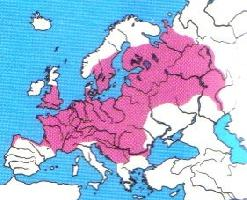
Váhy a míry
| Délka | od 8 do 12 cm |
|---|
Stav ohrožení
| Ohrožen |
Popis zvířete
The European bullhead, scientifically named Cottus gobio, is a fascinating freshwater fish that inhabits the streams and rivers of Europe. This species belongs to the Cottidae family, which is known for its diverse array of sculpin fish. The European bullhead has garnered attention for its distinctive physical appearance and intriguing behavioral traits.Physically, the European bullhead is relatively small, typically reaching lengths of about 12 to 15 centimeters, though some individuals may grow slightly larger. Its body is characterized by a stout, robust structure, tapering towards the tail. The skin of the European bullhead is covered in a mottled pattern of browns and greens, a natural camouflage that blends seamlessly with the rocky riverbeds and stream bottoms where it resides. This camouflage is crucial for its survival, helping it evade predators and ambush prey.
One of the most notable features of the European bullhead is its head, which is disproportionately large compared to its body and gives the fish its common name. The head houses a set of strong, spiny pectoral fins, which the bullhead uses for stabilization and maneuvering through its fast-flowing freshwater habitat. Additionally, its mouth is wide and underturned, equipped with small, sharp teeth designed for gripping onto prey.
The eyes of the European bullhead are situated on the top of its head, providing a wide field of vision that is essential for detecting predators and prey in the murky waters it frequents. This positioning is particularly advantageous for spotting potential threats from above.
Ecologically, the European bullhead plays a significant role in its environment. As a carnivorous species, its diet primarily consists of small invertebrates, including insect larvae, worms, and small crustaceans. This diet places the bullhead as an important link in the aquatic food web, controlling the populations of these smaller organisms and serving as prey for larger fish and birds.
Reproduction for the European bullhead occurs in the spring, when water temperatures begin to rise. Males become territorial and prepare nesting sites by clearing depressions in the riverbed. Females lay their eggs in these nests, which are then fertilized and guarded by the males until they hatch. This parental investment is relatively rare among fish and highlights the bullhead's unique reproductive strategy.
The European bullhead's habitat is typically characterized by clear, cool waters with a strong current and a bottom of gravel or stones. It is sensitive to changes in water quality and habitat degradation, making it a useful indicator species for environmental health. Unfortunately, pollution, habitat loss, and changes in land use have led to declines in bullhead populations in some areas, prompting conservation efforts to protect this intriguing species and its freshwater habitats.
In conclusion, the European bullhead (Cottus gobio) is a small, yet ecologically important freshwater fish with a unique set of physical and behavioral traits. Its presence in European waterways is a testament to the health of these ecosystems, making it a species of interest not only to biologists and ecologists but also to conservationists working to preserve the natural heritage of Europe's rivers and streams.
Mapa výskytu

Podobná zvířata
Nové fotografie zvířat
Top 10 zvířat
- Dolphin gull (Leucophaeus scoresbii)
- Japanese macaque (Macaca fuscata)
- Stone loach (Barbatula barbatula)
- Russian tortoise (Testudo horsfieldii)
- Galápagos tortoise (Geochelone nigra complex)
- Greek tortoise (Testudo graeca)
- Diana monkey (Cercopithecus diana)
- Common flying dragon (Draco volans)
- Moustached guenon (Cercopithecus cephus)
- Galápagos penguin (Spheniscus mendiculus)
